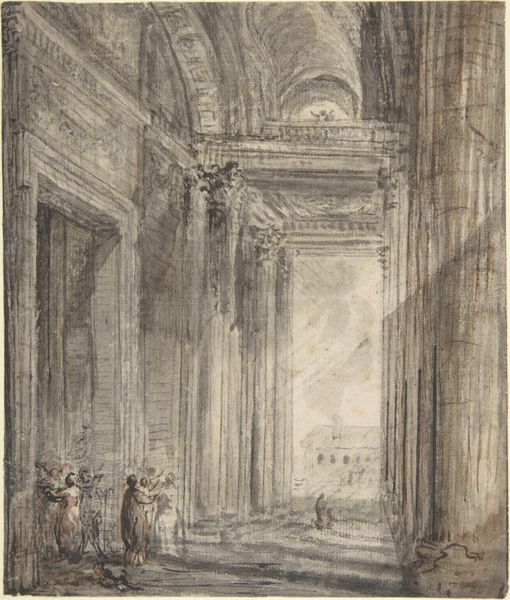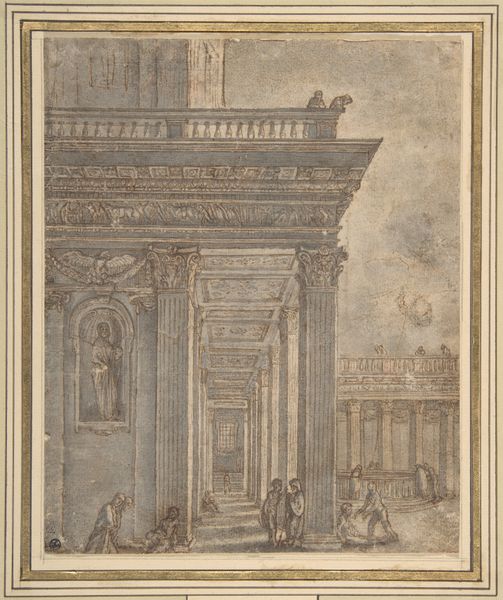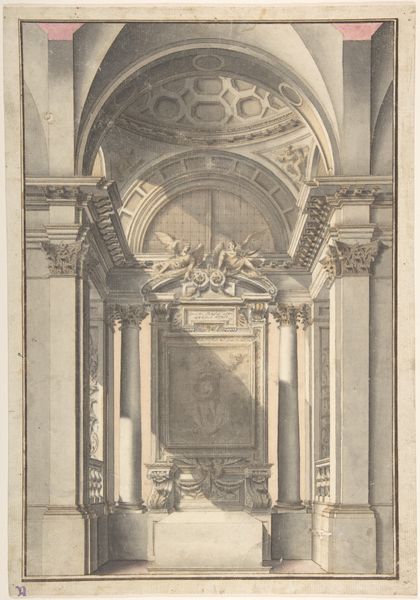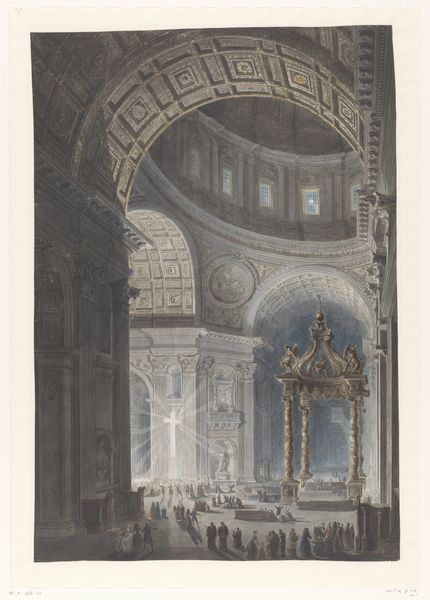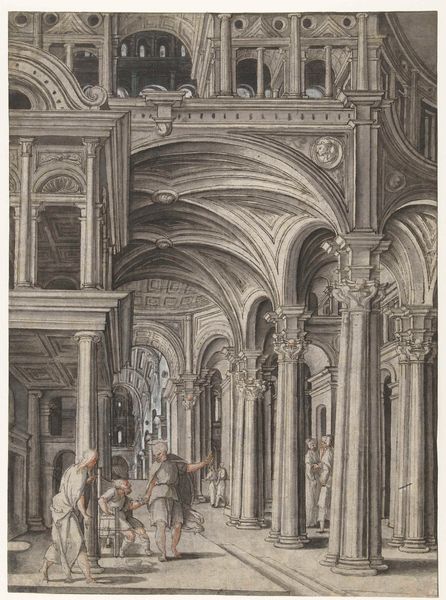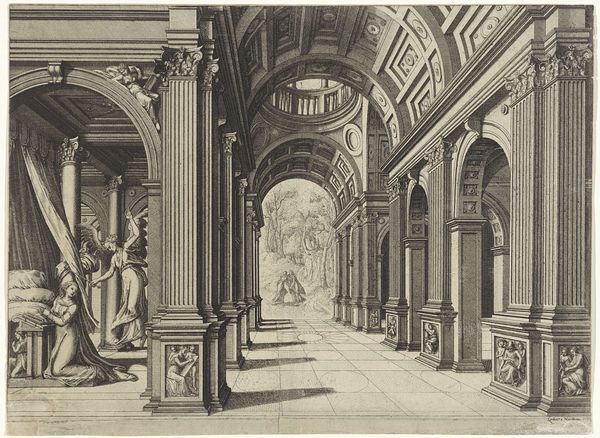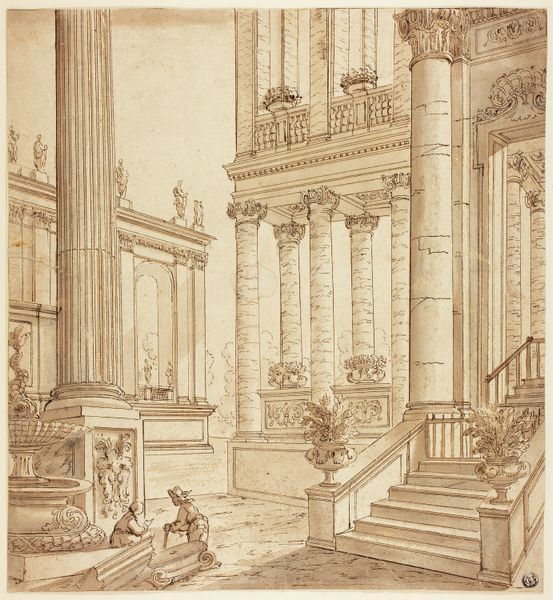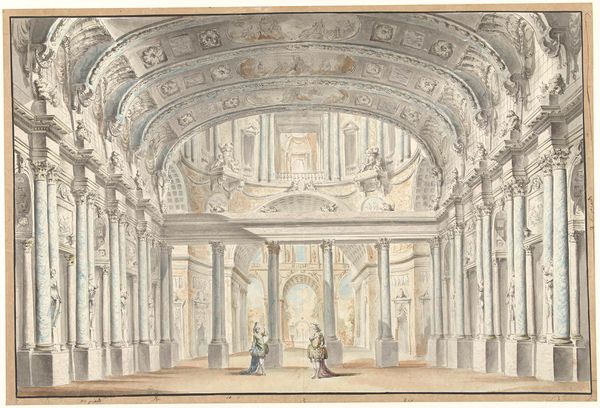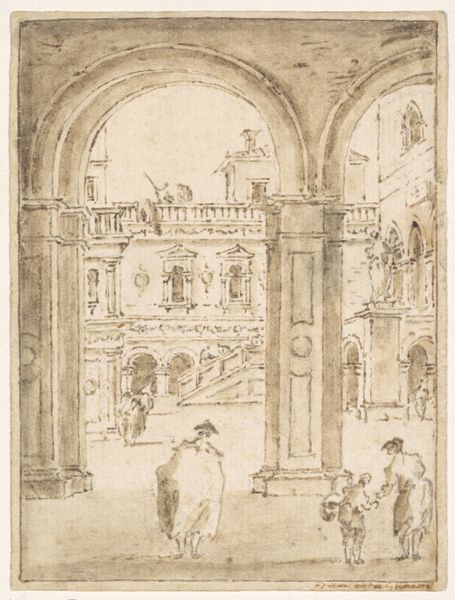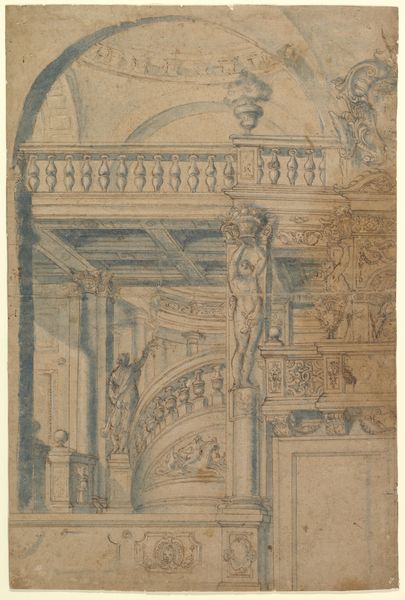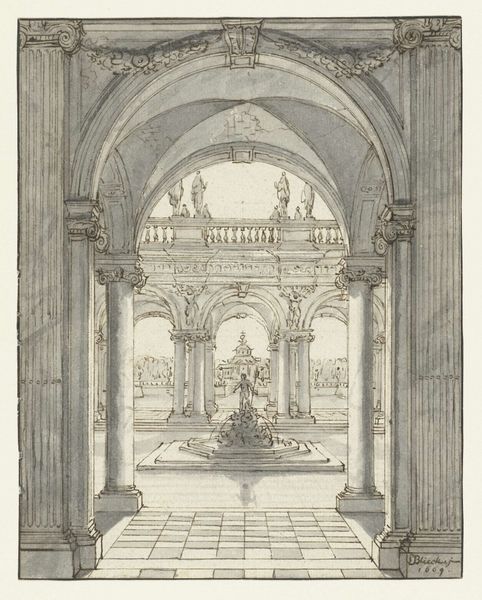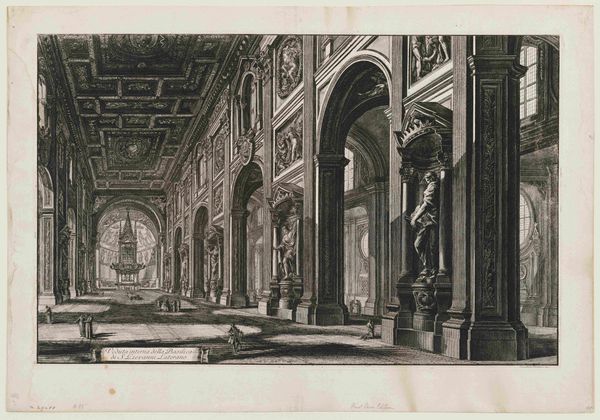
drawing, print, watercolor, pencil, architecture
#
architectural sketch
#
drawing
#
neoclacissism
# print
#
landscape
#
watercolor
#
coloured pencil
#
pencil
#
watercolour illustration
#
history-painting
#
architecture
Dimensions: 11-1/8 x 8-1/8 in
Copyright: Public Domain
Curator: This watercolor illustration, an "Interior of Temple, Design for Stage Scene," was created sometime between 1700 and 1800 by an anonymous artist. The location marked is the Metropolitan Museum of Art, here in New York. Editor: Oh, the cool serenity of those blue-grays! It feels like stepping into a dream of classical grandeur. Immediately, I feel the weight of those columns, the almost intimidating symmetry... and yet, the figures at the bottom introduce an intimacy that brings the grand scale of everything else down to earth. Curator: Precisely! Note how the artist uses pencil and watercolor to depict an idealized architectural space. It strongly reflects Neoclassical ideals, doesn't it? The pursuit of perfect form, balanced proportions, the reference to ancient temples… Stage design was often the perfect place to give free rein to such grand idealizations. Editor: Totally! And the subtle use of color gives everything an almost ethereal quality. You have this sense of faded glory or maybe a half-remembered fantasy. Do you get the impression this piece, even in its idealization, still feels nostalgic, almost like something yearned for that never fully existed? Curator: It speaks volumes, doesn’t it? In stage design, we are presented with constructed realities designed to evoke certain emotions. Temples often stand as metaphors for sacred knowledge and the quest for higher truths. The statue at the center further suggests idealized human form, the celebration of intellect and reason. I think it speaks to a certain cultural desire of the 18th century. Editor: And yet, in rendering it with watercolor, the artist reminds us that it's all just… artifice. These Neoclassical theaters often recreated and celebrated very theatrical values such as illusion and deception. That delicate watercolor almost feels like it mocks the grandeur, hinting that beneath all those imposing columns might lie, well… nothing. What do you make of that contrast? Curator: Fascinating point! It might point toward a deeper questioning, the beginning of a shift away from absolute certainty toward a more nuanced view. Even though this work revels in Neoclassical aesthetics, perhaps a crack appears in its foundation… a hint of the complexities to come. Editor: Well, that certainly gave me food for thought! I love the way such a formal scene reveals the possibility of hidden emotions underneath those columns.
Comments
No comments
Be the first to comment and join the conversation on the ultimate creative platform.
